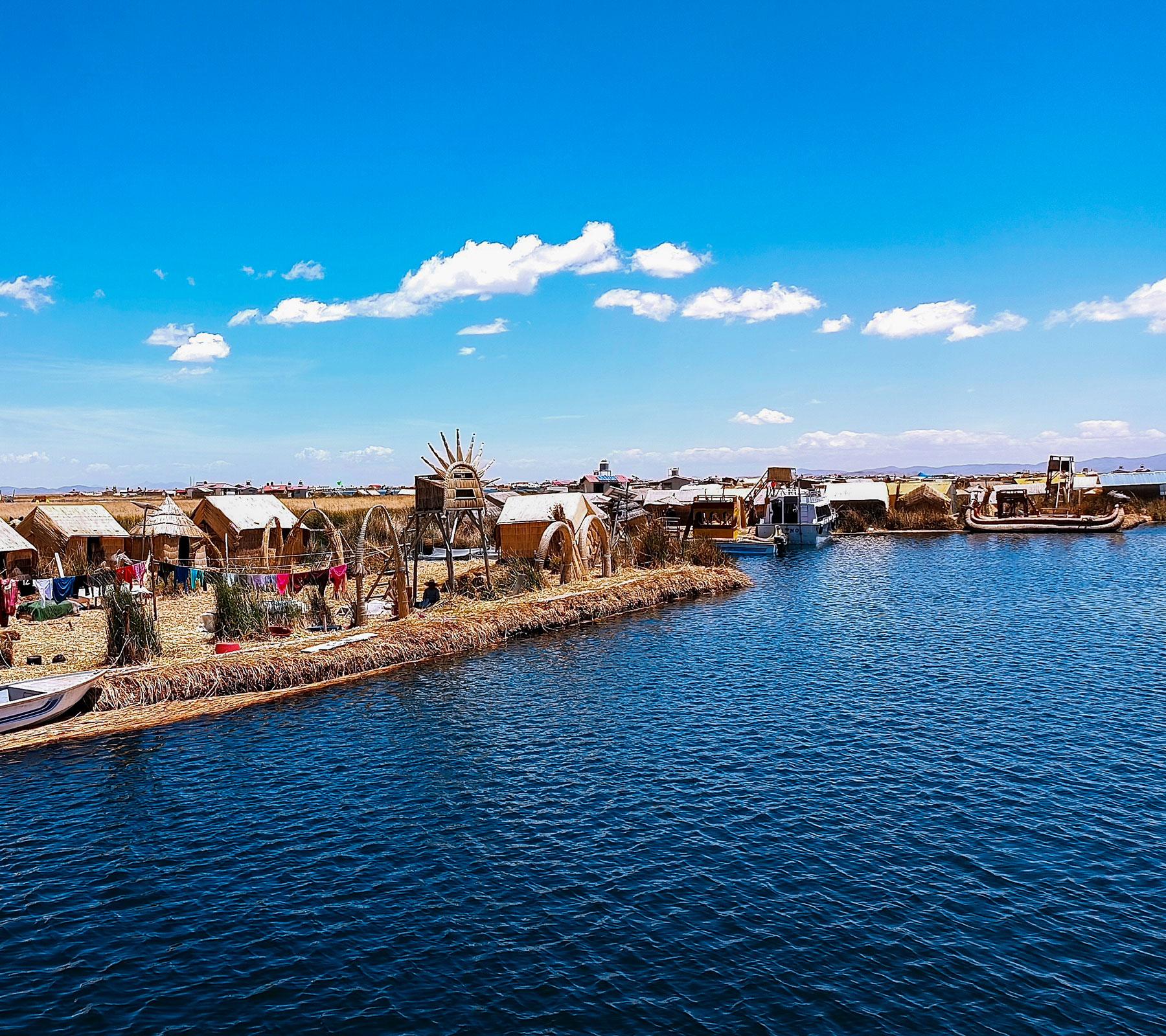Lake Titicaca
At the break of dawn over Lake Titicaca, a soft blue mist blankets the landscape, creating an ethereal atmosphere. The scurrying of guinea pigs seeking shelter beneath rocks is soon accompanied by the fluttering sounds of ducks and "chocas" preparing for flight. As the first rays of sunlight pierce through the haze, the day begins in this serene paradise. Situated in the department of Puno at a lofty altitude of 3,808 meters above sea level, Lake Titicaca is recognized as the highest navigable lake in the world. This majestic body of water is a profound symbol for the people of Puno, with its deepest point near Soto's Island plunging to an impressive depth of 280 meters. The significance of Lake Titicaca lies not only in its geographical prominence but also in its historical role and its contribution to regulating the climate of the surrounding areas, offering vital resources to the local inhabitants.
Once considered the most sacred body of water in the Inca Empire, Lake Titicaca now marks the natural border between Peru and Bolivia, at the heart of a region where thousands of subsistence farmers rely on its icy waters for fishing. The climate around the lake is harsh, with temperatures dropping below freezing at night between June and August, while the intense daytime sun necessitates protection from sunburn. The lake is home to a diverse array of wildlife, including wild ducks, various bird species, and fish. The totora reed, a versatile plant native to the lake, is used by the locals to construct floating islands, houses, and the traditional "caballitos de totora" boats. Among the most notable islands on the Peruvian side of the lake are Taquile, Uros, Suasi, and Amantani.
The shores of Lake Titicaca have been inhabited by several important cultures over the centuries, including the Chiripa Culture, whose archaeological remnants can be found in the southern part of the lake. However, the lake today faces challenges from increasing population pressure and the growing city of Puno, which still discharges untreated wastewater into its waters. To combat pollution and protect the lake's unique ecosystem, the Titicaca National Reserve was established in October 1978. The reserve is divided into two main areas: Ramis, located in the Huancane Province on the northern side of the lake, and the Bay area.
In July 2015, a study of the lake revealed that the population of the native fish species, Ispi, had doubled, a sign of hope for conservationists. Lake Titicaca is indeed magical, teeming with unique species such as the "parihuanas" and the Titicaca grebe, among many others.
A visit to Lake Titicaca offers an unparalleled experience of nature and culture. For instance, Amantani Island, located 36 kilometers from the city of Puno, is adorned with diverse shrubs and offers two natural viewpoints where visitors can observe pre-Hispanic ruins, including the temples of Pachamama and Pachatata, Incachincana, Incatihana, and a mummy cemetery.
Taquile Island, 35 kilometers from Puno in Chunchiyo Bay, was once a political prison until the early 20th century. Isla Esteves, located 65 kilometers from Puno, holds significant archaeological remains from the Tiahuanaco, Colla, and Pucara cultures and was later used as a prison by the Spaniards.
Inca Uyo, also known as the Fertility Temple, is located 18 kilometers from Puno. This site features an impressive array of carved stones, some nearly 2 meters tall, and is believed to have served as an important ceremonial center.
The floating islands of Uros, inhabited by the Aymara people, descendants of the ancient Uros civilization, are another highlight. The islanders live in traditional huts and sustain themselves through fishing with rudimentary nets. Taquile, located in the center of the lake, is about four hours from Puno. This island is particularly special, as its inhabitants speak Quechua and occasionally Aymara. The people here are mainly fishermen and weavers, known for their vibrant traditional clothing, including the chumpi and lliclla. The island is a haven of tranquility, free from the noise, pollution, and distractions of the modern world, making it an ideal place to escape and enjoy a peaceful retreat.
Where is located the lake Titicaca?
Lake Titicaca is situated in the Andes on the border between Peru and Bolivia. The lake's Peruvian side is located in the Puno region, which lies in the southeastern part of Peru. Specifically, Lake Titicaca is positioned at an altitude of 3,808 meters (12,507 feet) above sea level, making it the highest navigable lake in the world. The lake spans an area of approximately 8,372 square kilometers (3,232 square miles), with about 60% of its surface area in Peru and the remaining 40% in Bolivia. It is roughly 190 kilometers (118 miles) long and 80 kilometers (50 miles) wide at its broadest point.
In Peru, Lake Titicaca's primary access point is the city of Puno, which is situated on the northwestern shore of the lake. Puno serves as a key gateway for travelers looking to explore the lake and its islands, including the Uros floating islands, Taquile, and Amantani. The lake's location in the high plateau of the Altiplano contributes to its unique climate and ecosystem, as well as its cultural significance to the indigenous communities that have lived along its shores for centuries.





